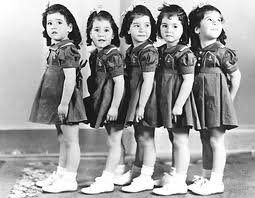

A playing card is a piece of specially prepared card stock, heavy paper, thin cardboard, plastic-coated paper, cotton-paper blend, or thin plastic that is marked with distinguishing motifs. Often the front (face) and back of each card has a finish to make handling easier. They are most commonly used for playing card games, and are also used in magic tricks, cardistry, card throwing, and card houses; cards may also be collected. Some patterns of Tarot playing card are also used for divination, although bespoke cards for this use are more common. Playing cards are typically palm-sized for convenient handling, and usually are sold together in a set as a deck of cards or pack of cards.
The most common type of playing card in the West is the French-suited, standard 52-card pack, of which the most widespread design is the English pattern, followed by the Belgian-Genoese pattern. However, many countries use other, traditional types of playing card, including those that are German, Italian, Spanish and Swiss-suited. Tarot cards (also known locally as Tarocks or tarocchi) are an old genre of playing card that is still very popular in France, central and Eastern Europe and Italy. Asia, too, has regional cards such as the Japanese hanafuda. The reverse side of the card is often covered with a pattern that will make it difficult for players to look through the translucent material to read other people's cards or to identify cards by minor scratches or marks on their backs.
Playing cards are available in a wide variety of styles, as decks may be custom-produced for competitions, casinos and magicians (sometimes in the form of trick decks), made as promotional items, or intended as souvenirs, artistic works, educational tools, or branded accessories. Decks of cards or even single cards are also collected as a hobby or for monetary value. Cards may also be produced for trading card sets or collectible card games, or as supplements for board games, however these are not generally regarded as playing cards.
Playing cards were likely invented during the Tang dynasty around the 9th century AD as a result of the usage of woodblock printing technology. The reference to a leaf game in a 9th-century text known as the Collection of Miscellanea at Duyang [Duyang zabian 杜阳杂编], written by Tang dynasty writer Su E, is often cited in connection to the existence of playing cards. However the connection between playing cards and the leaf game is disputed. The reference describes Princess Tongchang, daughter of Emperor Yizong of Tang, playing the "leaf game" in 868 with members of the Wei clan, the family of the princess's husband. The first known book on the "leaf" game was called the Yezi Gexi and allegedly written by a Tang woman. It received commentary by writers of subsequent dynasties. The Song dynasty (960–1279) scholar Ouyang Xiu (1007–1072) asserts that the "leaf" game existed at least since the mid-Tang dynasty and associated its invention with the development of printed sheets as a writing medium. However, Ouyang also claims that the "leaves" were pages of a book used in a board game played with dice, and that the rules of the game were lost by 1067.
If you want to read a lot more, go here: https://en.wikipedia.org/wiki/Playing_card
- 1 (12-ounce) package medium egg noodles
- 2 (10-3/4-ounce) cans condensed cream of mushroom soup
- 1 1/2 cups milk
- 1 (12-ounce) can chunk tuna, drained and flaked
- 2 cups frozen peas
- 3 tablespoons butter, melted
- 1/2 teaspoon salt
- 1/2 teaspoon black pepper
- 1 cup coarsely crushed potato chips
- Preheat oven to 350º. Coat a casserole dish with cooking spray.
- Prepare noodles according to package directions; drain.
- In a large bowl, combine soup and milk; mix well. Add noodles, tuna, peas, butter, salt, and pepper. Pour mixture into prepared casserole dish then top evenly with potato chips.
- Bake 30 to 35 minutes, or until bubbly and heated through. Serve immediately.

^with me 1988 when he came to the BC Range to qualify for his CCW.
From Guinness World Records...The largest hamburger weighs 2,566 lb 9 oz and was achieved by Wolfgang Leeb, Tom Reicheneder, Rudi Dietl, Josef Zellner, Hans Maurer and Christian Dischinger (all Germany) in Pilsting, Germany, on 9 July 2017.The hamburger consisted of three meat patties, tomatoes, lettuce, cucumbers, onions, hamburger sauce and a bun.
HOW TO OBSERVE
- bleu cheese
- coleslaw
- avocado
- fried egg
- barbecue and peanut butter
- mac & cheese


















2 comments:
Today is also our twins, Kevin and Daryl's 45th birthday. WOW I'm old! They are our youngest! LOL
Isn't it amazing how everyone in the Clinton orbit gets convicted and they skate by unscathed! What's up with that???
Tuna casserole is about the only thing this young bride could make. I made it with Chinese crispy noodles. Yum!
Now, tell me the difference in brush hogging and mowing.
XO Trisha
Happy Birthday to your boys!!!!
Brush hog information will be in tomorrow's blog.
xo
Post a Comment